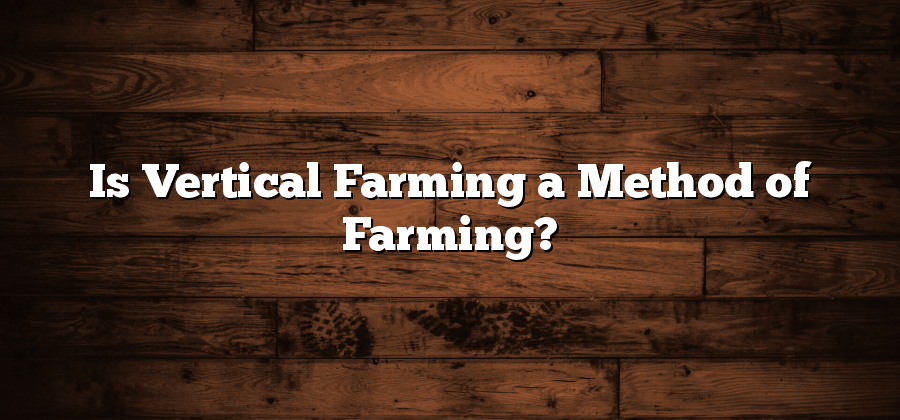Advantages of Vertical Farming
Vertical farming offers a myriad of advantages that are reshaping the landscape of agriculture. One significant advantage is its ability to maximize limited space. With the increasing global population and the rapid urbanization, arable land is becoming scarce. Vertical farming makes use of vertical space, allowing for the cultivation of crops in stacked layers, utilizing building facades, or even within shipping containers. This vertical approach eliminates the need for vast expanses of traditional farmland, making it an ideal solution for urban areas where space is a premium.
Another advantage of vertical farming is its potential for year-round production. By utilizing controlled environment systems, such as hydroponics or aeroponics, growers can create optimized growing conditions regardless of the external climate. This means that crops can be grown consistently throughout the year, irrespective of seasonal limitations. As a result, vertical farming offers a continuous supply of fresh produce, reducing the dependence on seasonal crops and mitigating the risks associated with adverse weather conditions and climate change. Moreover, this consistent availability of crops allows for better planning and management of food distribution, contributing to food security and reducing waste.
Challenges in Implementing Vertical Farming
Vertical farming is an innovative approach to agriculture that presents numerous benefits. However, its implementation faces several challenges. One major obstacle is the high upfront cost of setting up a vertical farm. The installation of specialized equipment such as vertical grow systems, LED lighting, and advanced irrigation systems requires significant financial investment. Additionally, the operational costs of running a vertical farm, including energy consumption and maintenance, can also be substantial. These financial barriers make it difficult for many farmers to adopt vertical farming as a viable option.
Another challenge in implementing vertical farming is the need for specialized knowledge and skills. Traditional farming methods may not translate directly to vertical farming due to the unique environment and infrastructure involved. Farmers must have a deep understanding of plant biology, hydroponics, lighting technology, and data analysis to optimize crop production. Acquiring this expertise can be time-consuming and require additional training and education. The shortage of experienced professionals who possess the necessary knowledge and skills further complicates the implementation of vertical farming on a larger scale.
Different Types of Vertical Farming Systems
Vertical farming has revolutionized agricultural practices by offering various types of farming systems. One popular system is the hydroponic system, which involves growing plants in nutrient-rich water instead of soil. This method allows for precise control over the plant’s nutrient intake and eliminates the risk of soil-borne diseases. Hydroponics is particularly effective in urban areas with limited space, as it can be set up indoors without the need for large land areas.
Another type of vertical farming system is the aeroponic system. Similar to hydroponics, aeroponics also doesn’t require soil for plant growth. In this system, plants are suspended in air and their roots receive a fine mist of nutrient solution. The absence of soil allows for optimal absorption of nutrients by the plants, promoting faster growth and higher yields. Aeroponics is highly efficient in terms of water usage, as the nutrient solution is recycled, minimizing water wastage.
Sustainability Benefits of Vertical Farming
Vertical farming is an innovative approach to sustainable agriculture that offers a multitude of benefits to the environment and communities alike. One of the key sustainability benefits of vertical farming is its ability to conserve land. Traditional agriculture requires vast expanses of fertile land to cultivate crops, often leading to deforestation and destruction of natural habitats. In contrast, vertical farming utilizes vertical space, allowing for the cultivation of crops in a smaller footprint. By maximizing land use efficiency, vertical farming helps protect and preserve valuable land resources.
Additionally, vertical farming has the potential to reduce water usage significantly. Traditional agriculture consumes vast amounts of water for irrigation, leading to excessive strain on limited water resources. In contrast, vertical farming employs innovative hydroponic or aeroponic systems that provide water directly to the roots of plants, minimizing water waste. Furthermore, these systems often include technologies such as smart sensors and water recycling systems to ensure optimal water usage. As a result, vertical farming can substantially decrease water consumption, making it a more sustainable alternative to traditional farming methods.
Vertical Farming and Urban Agriculture
As the demand for food continues to rise with rapid urbanization, vertical farming has emerged as a sustainable solution to meet the needs of urban agriculture. This innovative farming technique involves the cultivation of crops in vertically stacked layers, using hydroponics or aeroponics systems, within controlled environments. By maximizing the use of limited urban space, vertical farming offers numerous advantages for urban agriculture practitioners.
One of the primary benefits of vertical farming in urban agriculture is the efficient use of resources. With the ability to grow crops throughout the year, regardless of climate, vertical farms reduce the reliance on traditional agricultural practices that are often heavily dependent on seasonal variations. Moreover, the controlled environment allows for optimal usage of water, nutrients, and energy, creating a more efficient and sustainable farming system. Additionally, vertical farming reduces the need for long-distance transportation, decreasing carbon emissions and strengthening local food security.
Overall, the integration of vertical farming into urban agriculture provides a promising way forward in addressing the challenges of feeding growing urban populations sustainably. By harnessing advancements in technology, this innovative farming method holds the potential to revolutionize the way we grow and consume food in urban areas. However, there are still challenges and potential limitations to consider when it comes to implementing vertical farming on a larger scale.






